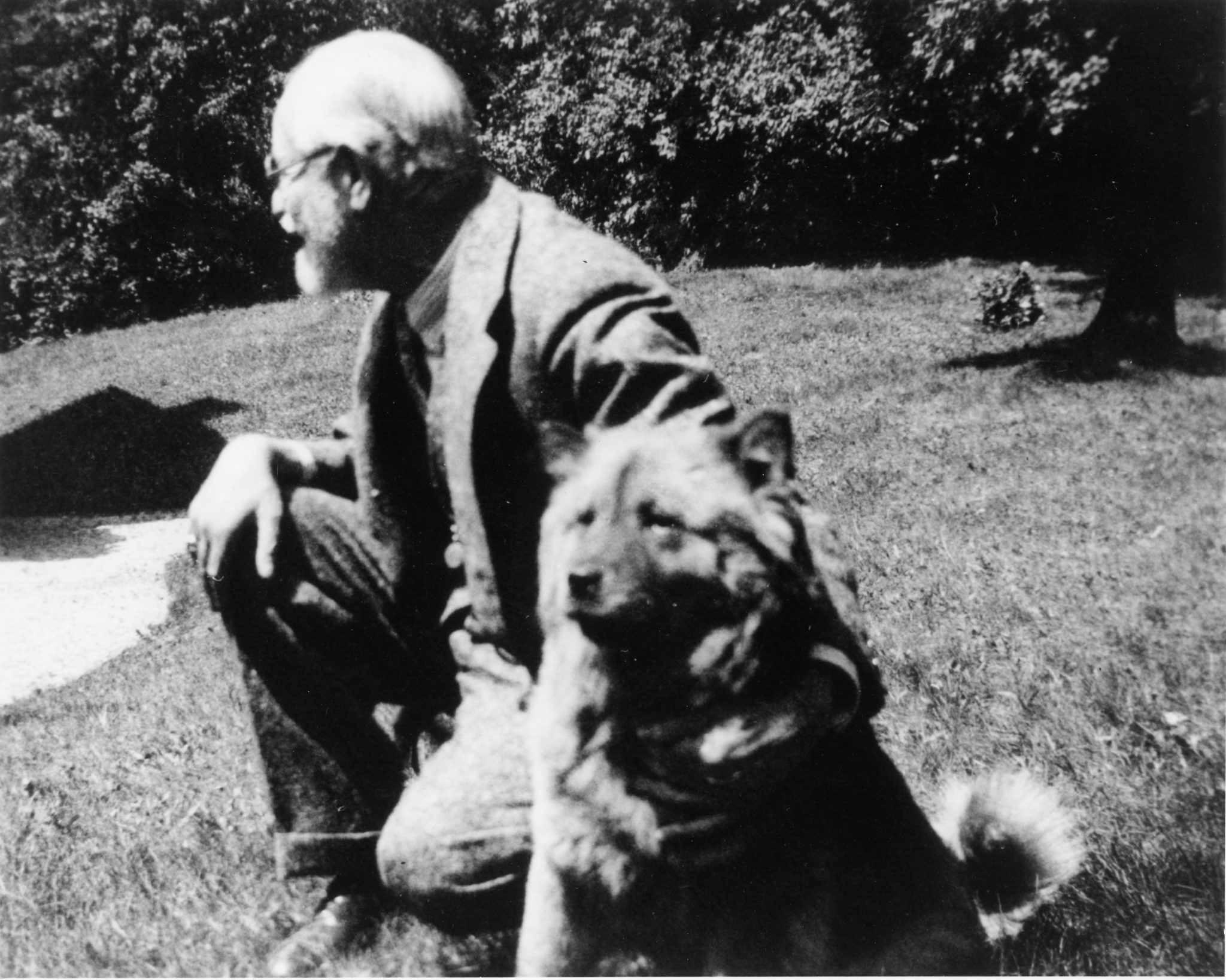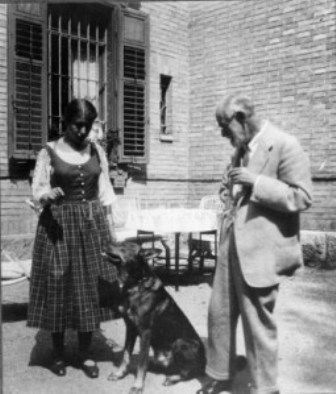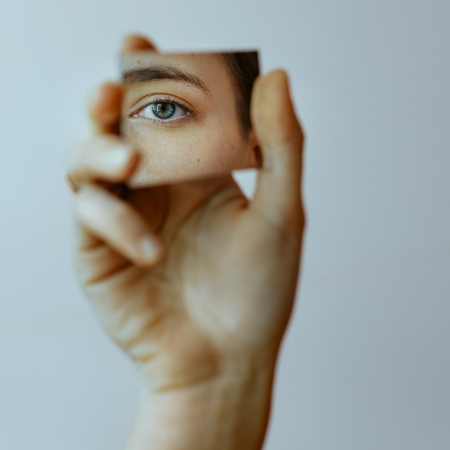I’ve always been a huge animal lover- I’ve had almost every type of pet imaginable,
from cats, dogs, hamsters, birds, and to something as exotic as an iguana. I can’t imagine my life without them and I really value what they have brought and taught me in life. Did you know that even our scientist Sigmund Freud had a favorite dog who never left his side even when doing therapy! Jofi was a chow that people were used to seeing in Freud’s office and “Freud claimed that he never needed to look at his watch during a session, as when Jofi got up and yawned it meant that the allotted hour was over. She was never late.” Essentially Freud became an animal lover himself!


How my pet affects my life
I had a roommate from college who was diagnosed with major depressive disorder, and living with her, I saw how much she struggled getting out of bed, going to classes, eating, and trying to get herself out of the room. A year after our freshman year, her father got her a dog and his name was Hershey! Hershey was the cutest thing ever, he
was a miniature poodle who loved to socialize and to play. After my roommate adopted Hershey, I slowly saw her more outside her room hanging out with me and our other friends. How due to Hershey she was taking more walks outside, even though there are days where she struggled to go on those walks, in the end the strolls with Hershey
definitely lifted her mood after! I lived with my roommate for 4 years and I was able to see a dog like Hershey be able to support and to save my roommate’s life making her realize that life is worth living!
Research says that having the companionship of a pet really does have positive effects on our bodies. Pets are able to support humans through reducing stress, depression, anxiety, and loneliness.
“Studies have demonstrated a reduction in cortisol, a hormone associated with stress level, as well as systolic and diastolic blood pressure following interaction with a therapy animal”
Animal-Assisted Therapy as a Complementary Intervention for
Mindfulness-Based Therapies (Atherton, Dunbar Jr. & Baker)
They are beneficial to cardiovascular health because they naturally advocate exercise and play! The animal- human bond is undeniable!
“Caring for an animal can help children become more secure and active as they grow older. Pets can also provide older adults with much-needed companionship. But, maybe most importantly, a pet can provide you with true joy and unconditional love.”
The Health and Mood-Boosting Benefits of Pets (Helpguide.org)
Wouldn’t knowing this will want you to go and get a pet right away!
But definitely before you get your loving companion, please do some research first and talk with other professionals in the pet stores or animal shelters to find out which animal is best for you to adopt- but even if you are not able to adopt a pet, having some animal interaction will also help you!
I came across a study that was titled “Pets and Happiness: Examining the Association between Pet Ownership and Wellbeing.” One part of the study is that they compared the well-being of pet owners to non-pet owners through a questionnaire and found that there was not much difference in the results in terms of well-being and personality, “Pet owners were higher in satisfaction with life than non-owners, but the two groups did not differ in happiness, positive emotions, or negative emotions.” One of the factors was that individuals are considerably more elated when they initially adopt their pet, and as time passes, they gradually return to their “baseline” well-being, which is known as hedonic
adaptation. That grabbed my attention because I never thought of it that way! The article says that “It is possible that this cognitive part of well-being is more resistant to adaptation since pet owners still consider their relationship with their pet when rating their overall life satisfaction, but the pet has little effect on their actual, day-to-day experience of emotions.” I recall being ecstatic when I first adopted my puppy—of course, I am still extremely happy when I see my furry friend but I have now become accustomed to having them in my life and they have now become my new reality—a joyful norm.

I was also not expecting the results of this study to find very little difference in terms of happiness; I was expecting a significant difference—actually, I was expecting dramatic results because my dogs make me the happiest!
What can my pet and I do?
After doing some research about pets and wellbeing, it made me wonder what my dogs and I can do for each other to be able to enhance our wellbeing, especially during this pandemic where we spend most of our time at home with nothing much to do. According
to the article “Dog tales: mindful dog interactions evoke similar experiences to dog assisted mindfulness meditations” the study looked at the feasibility and effectiveness of two six-week interventions that dog owners can conduct with their pets in the safety and comfort of their own homes, with the goal of improving both parties’ well-being. “Qualitative results supported that “the owner feeling happiness/enjoyment and relaxation/calm while completing the task, as well as feeling a sense of engagement and/or focus while completing the task, and enhanced emotional/spiritual connection with their dogs.” We can really see the positive effects of the intervention on the
participants!
To answer the question of what you and your pet can do, here is a mindfulness exercise that you can try together!
- Observe the animal that you are with, what do they look like? Look at the different parts of the animal and carefully notice every aspect of him/her
- Listen to the sounds that it makes, does it make a sound?
- Are you able to touch your animal? If you are able to, how does it feel?
- If you are doing an activity together, how does your movement compare to the animal?
Sources:
- Animal-assisted therapy as a complementary intervention for mindfulness … (n.d.). Retrieved April 30, 2022, from https://www.counseling.org/docs/default-source/vistas/assisted-therapy-complementary-intervention
- Jackson-Grossblat, A., Carbonell, N., & Waite, D. (2016). The Therapeutic Effects Upon Dog Owners Who Interact With Their Dogs in a Mindful Way. Journal of Humanistic Psychology, 56(2), 144–170. https://doi.org/10.1177/0022167814559390
- Katherine Jacobs Bao & George Schreer (2016) Pets and Happiness: Examining the Association between Pet Ownership and Wellbeing, Anthrozoös, 29:2, 283-296, DOI: 10.1080/08927936.2016.1152721
- Potkier , et al. “Practice Mindfulness with Animals.” Mindful Methods For Life, 5 Sept. 2019, https://mindfulmethodsforlife.com/practice-mindfulness-with-animals/.
- The Health and Mood-Boosting Benefits of Pets – HelpGuide.org. (2022). Retrieved 30 April 2022, from https://www.helpguide.org/articles/mental-health/mood- boosting-power-ofdogs.htm#:~:text=Pets%2C%20especially%20dogs%20and%20cats,valuable%20companionship%20for%20older%20adults.


